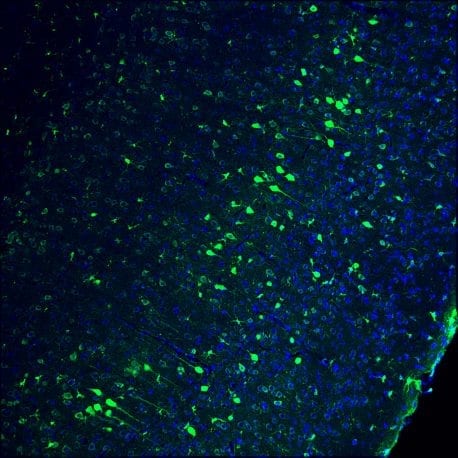
“Hey Siri, how’s my hair?”
Your smartphone may soon be able to give you an honest answer, thanks to a new machine learning algorithm designed by U of T Engineering researchers Parham Aarabi (ECE) and Wenzhi Guo (ECE MASc 1T5).
The team designed an algorithm that learns directly from human instructions, rather than an existing set of examples, and outperformed conventional methods of training neural networks by 160 per cent. But more surprisingly, their algorithm also outperformed its own training by nine per cent — it learned to recognize hair in pictures with greater reliability than that enabled by the training, marking a significant leap forward for artificial intelligence.
Aarabi and Guo trained their algorithm to identify people’s hair in photographs — a much more challenging task for computers than it is for humans.
“Our algorithm learned to correctly classify difficult, borderline cases — distinguishing the texture of hair versus the texture of the background,” says Aarabi. “What we saw was like a teacher instructing a child, and the child learning beyond what the teacher taught her initially.”
Humans “teach” neural networks — computer networks that learn dynamically — by providing a set of labeled data and asking the neural network to make decisions based on the samples it’s seen. For example, you could train a neural network to identify sky in a photograph by showing it hundreds of pictures with the sky labeled.
This algorithm is different: it learns directly from human trainers. With this model, called heuristic training, humans provide direct instructions that are used to pre-classify training samples rather than a set of fixed examples. Trainers program the algorithm with guidelines such as “Sky is likely to be varying shades of blue,” and “Pixels near the top of the image are more likely to be sky than pixels at the bottom.”
Their work is published in the journal IEEE Transactions on Neural Networks and Learning Systems.
This heuristic training approach holds considerable promise for addressing one of the biggest challenges for neural networks: making correct classifications of previously unknown or unlabeled data. This is crucial for applying machine learning to new situations, such as correctly identifying cancerous tissues for medical diagnostics, or classifying all the objects surrounding and approaching a self-driving car.
“Applying heuristic training to hair segmentation is just a start,” says Guo. “We’re keen to apply our method to other fields and a range of applications, from medicine to transportation.”
Learn more: New AI algorithm taught by humans learns beyond its training
The Latest on: AI algorithm heuristic training
[google_news title=”” keyword=”AI algorithm heuristic training” num_posts=”10″ blurb_length=”0″ show_thumb=”left”]
via Google News
The Latest on: AI algorithm heuristic training
- Training AI to Master the World of Pokémon [Video]on May 9, 2024 at 10:22 am
A YouTube video by Peter Whidden showcases an intriguing project where AI is trained to play Pokémon with a surprising level of ...
- Revolutionizing AI Training With Synthetic Dataon May 8, 2024 at 6:00 am
As AI continues to reshape industries, synthetic data will play an increasingly critical role in powering the next generation of intelligent systems and applications.
- AI Is Gathering a Growing Amount of Training Data Inside Virtual Worldson May 1, 2024 at 9:52 am
To anyone living in a city where autonomous vehicles operate, it would seem they need a lot of practice. Robotaxis travel millions of miles a year on public roads in an effort to gather data from ...
- Q&A: Enhancing last-mile logistics with machine learningon April 17, 2024 at 1:05 pm
Therefore, they use so-called heuristics, which are algorithms that are very efficient ... working on with folks from the MIT-IBM Watson AI Lab. Here, the general idea is that you train a model ...
- Meta’s new AI chips run faster than beforeon April 10, 2024 at 8:00 am
Right now, MTIA mainly trains ranking and recommendation algorithms, but Meta said the goal is to eventually expand the chip’s capabilities to begin training generative AI like its Llama ...
- Labeled: A New Wave Of AI Content Labeling Effortson April 8, 2024 at 5:00 pm
Generative AI data providers like Appen or Scale AI are recruiting (human) writers to create content for LLM model training ... Like category heuristics in shopping, labels simplify our decision ...
- Wear-and-go: AI robotic exoskeleton devised, no calibration or training neededon March 20, 2024 at 11:10 am
This framework doesn’t require any training, calibration ... and other applications. AI-backed deep learning algorithms in bot This robot is equipped with AI-backed deep learning algorithms ...
- Why Antitrust Regulators Are Focused On Problematic AI Algorithmson March 13, 2024 at 9:14 am
Algorithmic Pricing Raises Tough Questions And May Be Beneficial The conditions under which parallel conduct involving the selection or training of AI algorithms would support a criminal ...
- algorithm trainingon November 30, 2021 at 4:00 pm
The system, called the Artificial Intelligence and Tracking System ... The goal of this new project was to develop one-to-many matching algorithms, which can match one face against the plethora ...
via Bing News











